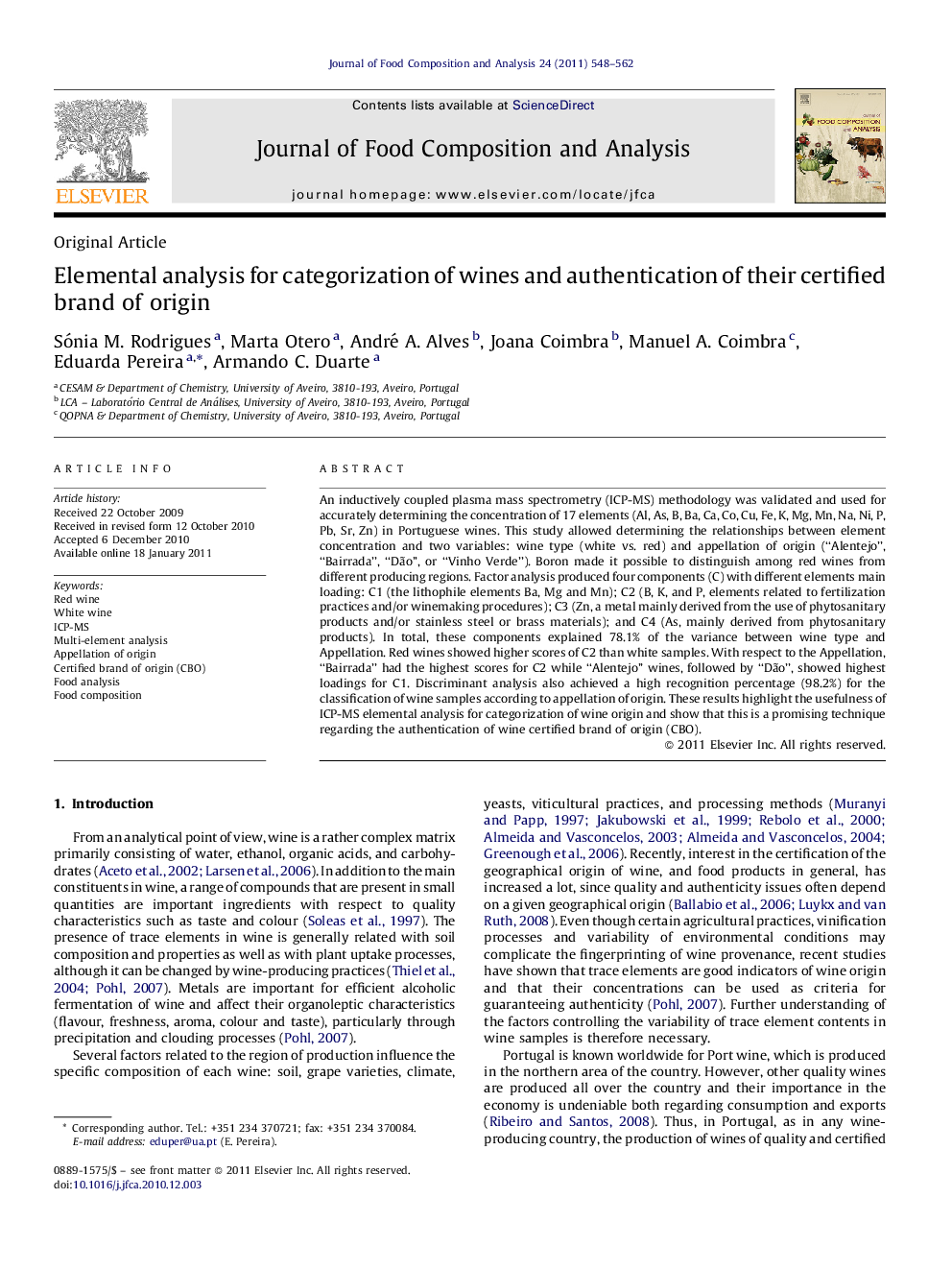| Article ID | Journal | Published Year | Pages | File Type |
|---|---|---|---|---|
| 7620912 | Journal of Food Composition and Analysis | 2011 | 15 Pages |
Abstract
An inductively coupled plasma mass spectrometry (ICP-MS) methodology was validated and used for accurately determining the concentration of 17 elements (Al, As, B, Ba, Ca, Co, Cu, Fe, K, Mg, Mn, Na, Ni, P, Pb, Sr, Zn) in Portuguese wines. This study allowed determining the relationships between element concentration and two variables: wine type (white vs. red) and appellation of origin (“Alentejo”, “Bairrada”, “Dão”, or “Vinho Verde”). Boron made it possible to distinguish among red wines from different producing regions. Factor analysis produced four components (C) with different elements main loading: C1 (the lithophile elements Ba, Mg and Mn); C2 (B, K, and P, elements related to fertilization practices and/or winemaking procedures); C3 (Zn, a metal mainly derived from the use of phytosanitary products and/or stainless steel or brass materials); and C4 (As, mainly derived from phytosanitary products). In total, these components explained 78.1% of the variance between wine type and Appellation. Red wines showed higher scores of C2 than white samples. With respect to the Appellation, “Bairrada” had the highest scores for C2 while “Alentejo” wines, followed by “Dão”, showed highest loadings for C1. Discriminant analysis also achieved a high recognition percentage (98.2%) for the classification of wine samples according to appellation of origin. These results highlight the usefulness of ICP-MS elemental analysis for categorization of wine origin and show that this is a promising technique regarding the authentication of wine certified brand of origin (CBO).
Keywords
Related Topics
Physical Sciences and Engineering
Chemistry
Analytical Chemistry
Authors
Sónia M. Rodrigues, Marta Otero, André A. Alves, Joana Coimbra, Manuel A. Coimbra, Eduarda Pereira, Armando C. Duarte,
